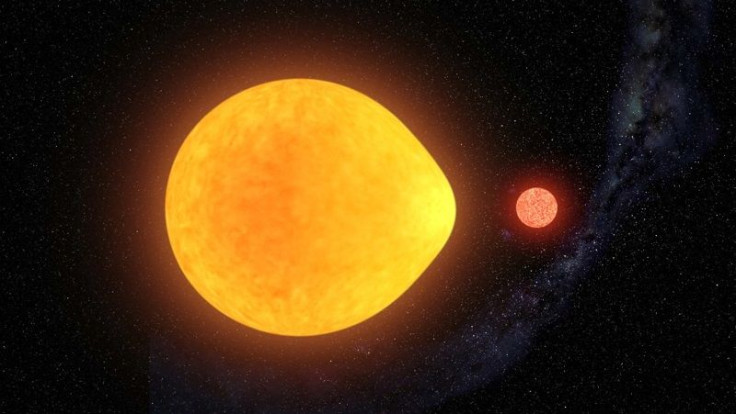Astronomers Discover Tear-Drop Shaped Star Pulsating Only On One Side
KEY POINTS
- Researchers discovered a star that is only pulsating on one side
- The existence of such stars has been predicted in theory since the 1980s
- The star has a tear-drop shape because of its companion star's gravitational pull
- The discovery was made thanks to citizen science and data from NASA's TESS
Scientists discovered a new type of pulsating star in the Milky Way, about 1,500 light-years from the Earth. The discovery was made, thanks to citizen science and data from NASA's TESS satellite.
Pulsating Stars
Stars that pulsate have been known to science for a long time and these types of stars pulsate to their own rhythms. However, one common thing that pulsating stars have in common is the fact that the oscillations can be seen on all sides of the star.
In a new study, however, an international team of researchers describes the discovery of a type of pulsating star that is oscillating largely only on one hemisphere, particularly the side that is facing its companion star in the binary system.
According to the researchers, the existence of such stars has been predicted since the 1980s but the new discovery is the first one to actually be found.
Binary Star System
Amateur astronomers were actually the first people to observe that the star known as HD74423 was behaving strangely while they were looking for signs of planets around other stars using public data from NASA's Transiting Exoplanet Survey Satellite (TESS), the agency's planet-hunting satellite.
The research team members were, then, able to ascertain that the pulsations were only happening on one side based on their observations of the variations in the star's brightness depending on its angle and orientation in the binary system.
"As the binary stars orbit each other we see different parts of the pulsating star," study co-author Dr. David Jones of Instituto de Astrofisica de Canarias said. "Sometimes we see the side that points towards the companion star, and sometimes we see the outer face."
In HD74423's case, the fluctuations were only observed when the same hemisphere of the star was facing the telescope.
Evidently, the reason why HD74423 is only pulsating on one side is that its companion red dwarf star is distorting its oscillations. Because the binary system’s orbital period is so short at less than two days, the red dwarf’s gravitational pull is distorting the larger HD74423's oscillations and causing it to have a tear-drop shape.
TESS Data
Being the first discovery of a star that is only pulsating on one side, the authors believe that there could be other such stars that could be discovered in the future thanks to the data that TESS regularly provides for both professional and amateur astronomers.
"We expect to find many more hidden in the TESS data," study co-author Professor Saul Rappaport of the Massachusetts Institute of Technology said.
The study is published in Nature Astronomy.

© Copyright IBTimes 2024. All rights reserved.






















